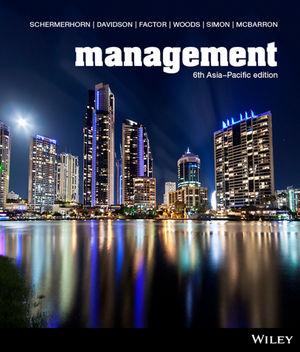Emerging markets in Asia pose special challenges to managers along with the opportunity of vast numbers of
Question:
Emerging markets in Asia pose special challenges to managers along with the opportunity of vast numbers of customers. The favoured organisational structure is the diversified conglomerate, such as the Tata Group in India, that accounts for 6 per cent of the country’s GDP. With subsidiaries in carmaking, agricultural chemicals, food production, hotels and telecommunications, it has the ability to shift its emphasis across many market sectors, depending on changing conditions such as rising and falling talent shortages. Indeed, emerging markets are leading the way in many sectors through their application of familiar management theories such as lean production, paring away non‐essential features down to ‘frugal production’, to compete on productivity and not just on cost. Innovative management models are using mass‐production techniques to supply sophisticated services in markets once thought to be too fragmented and geographically constrained.
An Indian company redesigned mobile phone base stations to run on a solar‐powered battery — not only helping people in remote areas who have little or erratic access to electricity, but creating a new green technology. The emerging markets of the developing world are implementing business models that see these regions enjoying growth rates that are proving sustainable.
Adaptability is the key. For example, the business model of Indian high‐end leather goods manufacturer Hidesign relies on quality control in production. Another structure in emerging markets is the hybrid design, where private and government ownership is used to bring the advantages of both to balance the disadvantages of either. Instead of merely scaling up to gain economies of scale by reducing costs through long production runs of standardised items, hybrid structure organisations scale out rather than up, to involve a wider circle of people where large populations are scattered — thereby avoiding transport costs and the expense of layers of bureaucracy in centralised structures.
Some see the hybrid business model as temporary, and likely to disappear as local stockmarkets and investors assume control and the risk management. Hybrid organisations are inherently confusing, responsible to both the state and the market. While the path to privatisation is long, the flexibilities that hybrids offer make them viable structures for many emerging markets such as China and India. These are examples of how the organisation structure serves as a form of management control. It is a matter of balance and relevance. Too tight or coupled a structure, and adaptability to changing circumstances is impaired. Too loose or uncoupled, and the benefits of controls are unrealised: information, coordination and performance, along with compliance and efficiency.
QUESTION
Recall an organisation known to you, and think out how it uses its structure to facilitate the control function.
Step by Step Answer:

Management
ISBN: 9780730329534
6th Asia Pacific Edition
Authors: Schermerhorn, John, Davidson, Paul, Factor, Aharon, Woods, Peter, Simon, Alan, McBarron, Ellen





